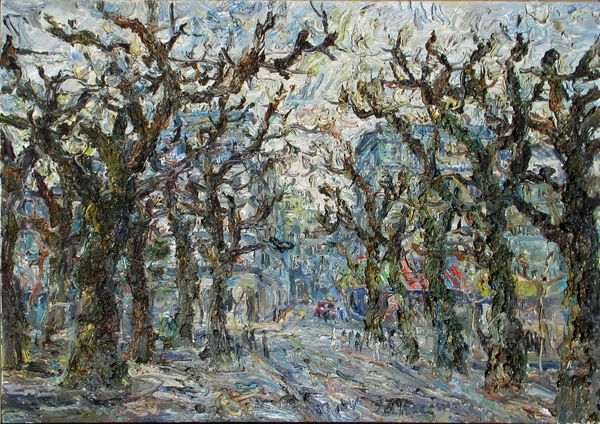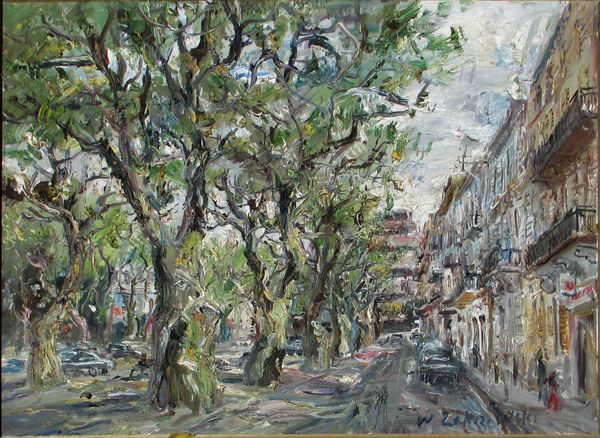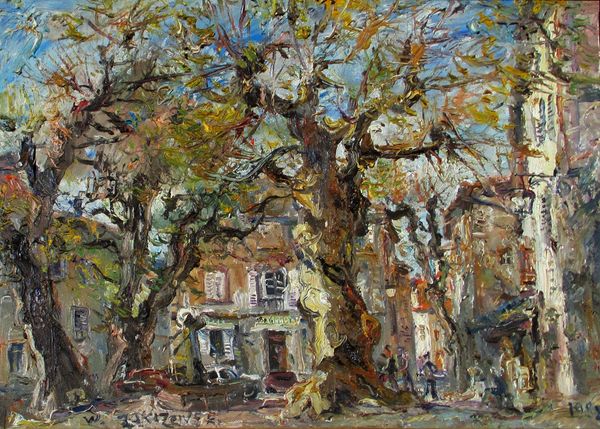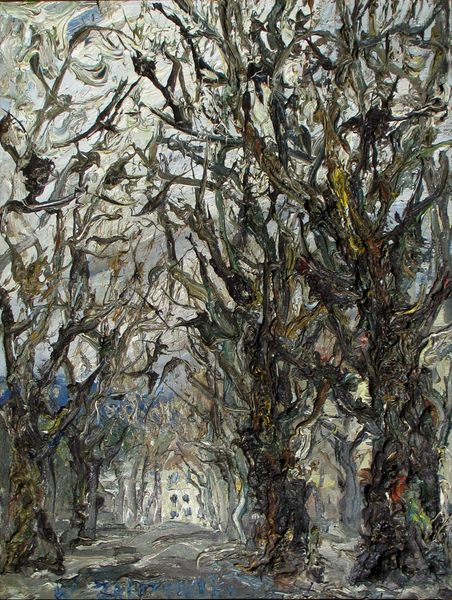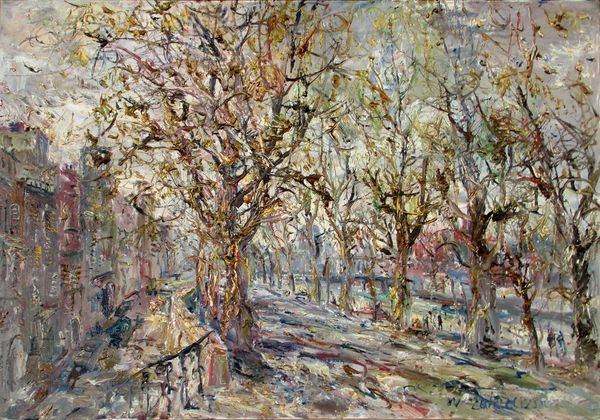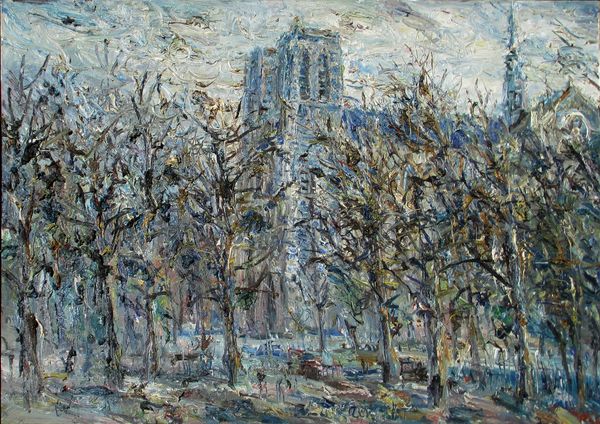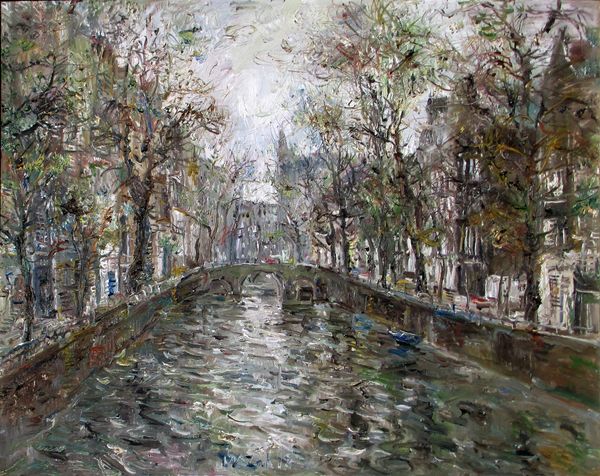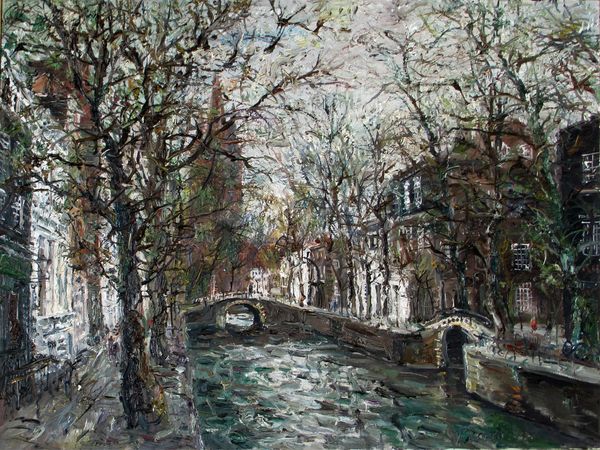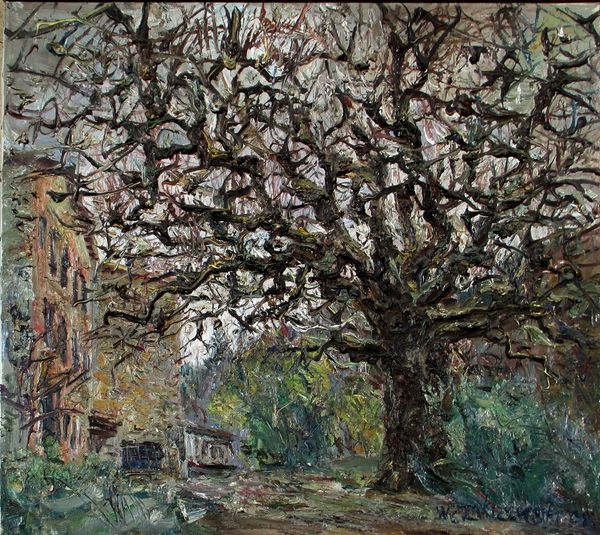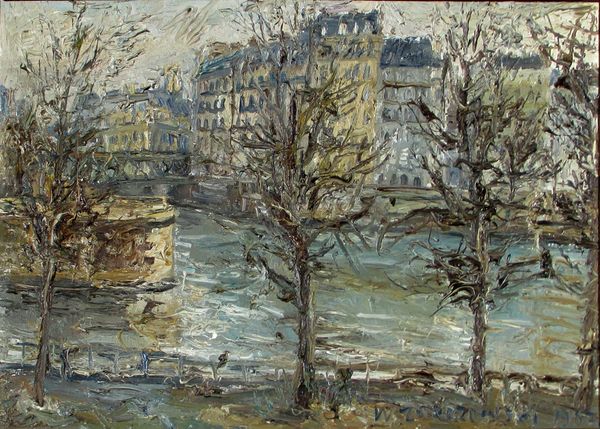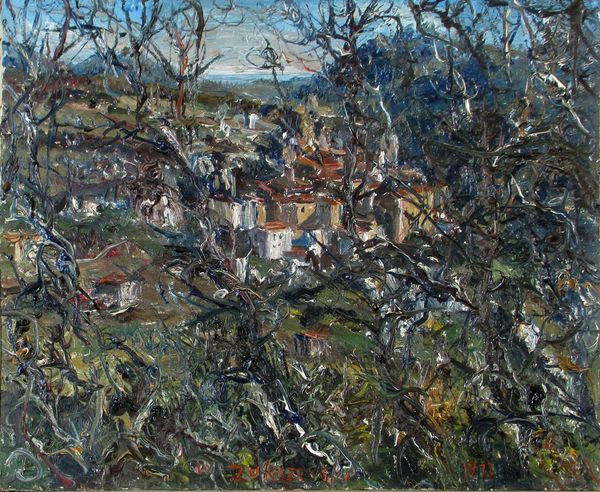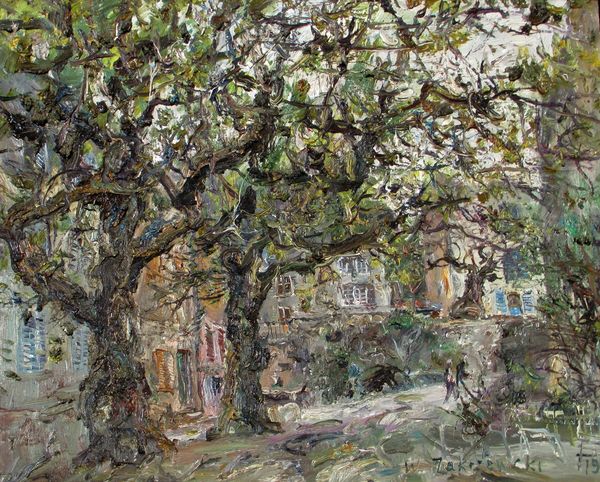
painting, oil-paint
#
abstract expressionism
#
painting
#
oil-paint
#
landscape
#
oil painting
#
neo expressionist
#
neo-expressionism
#
cityscape
Dimensions: 70 x 90 cm
Copyright: Private collection copyright
Art Historian: We’re standing before "Roma, San Giovanni," an oil painting by Włodzimierz Zakrzewski, created in 1970. The piece plunges us into a Roman cityscape. Curator: My initial impression? A palpable sense of decay, even neglect. There’s something heavy in the brushstrokes, mirroring the weight of history, perhaps the crumbling of empires, reflected in the trees looming over the central space. Art Historian: Exactly! Observe how Zakrzewski employs a Neo-Expressionist style; the very texture of the oil paint conveys a deeper psychological landscape. Notice how bare branches claw at a tumultuous sky; skeletal trees stand as silent witnesses. It's a powerful juxtaposition, evoking both life and loss. Curator: But let's not forget the context in which this work appeared. 1970 marked a period of immense social change, the struggles for civil rights and liberation movements around the world. How might this affect our view of Zakrzewski's symbolic portrayal of a city in transition, perhaps reflecting societal anxieties of the era? Is the grandeur simply a facade? Art Historian: A valid interpretation! In Christian symbolism, the trees can stand for the cross. And the towering structure in the background surely carries complex cultural connotations as it represents Saint John Lateran—the Cathedral of Rome, an icon of power and religion throughout the centuries. It stands, even now. Is Zakrzewski commenting on faith or is the image used in some ironic sense? Curator: It leads me to consider the impact of tourism and its effect on sacred spaces. Are we simply consuming history without acknowledging the layered inequalities it holds, which is what it means for the place in the Roman cultural and political identity, its ongoing meaning for current Romans? The lack of human presence emphasizes a hollowness, even alienation from community and continuity. Art Historian: But still—notice how that absence allows the architectural forms to speak for themselves, highlighting both grandeur and possible vulnerability. It reminds us of cycles: what rises will, eventually, fall—and what appears dead can come to life once more. Curator: Ultimately, I see this cityscape as less of a literal depiction and more of a metaphorical meditation on power structures and what has been lost or suppressed along the way, leaving the viewer contemplating where true hope lies. Art Historian: Perhaps... And regardless, Zakrzewski challenges us to consider Rome—and ourselves—beyond the surface of mere postcard imagery, using layered symbols as emotional portals.
